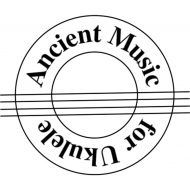All sources are Wikipedia.
Thomas Robinson (ca 1560 – 1610) was an English Renaissance composer and music teacher, who flourished around 1600. He taught and wrote music for lute, cittern, orpharion, bandora, viol, and voice.
Very little is known about Robinson’s life, but it is possible to draw conclusions from the dedicatory pages of his works. He and his father were in service of the Cecil family: Robinson’s father worked for the 1st Earl of Salisbury, Robert Cecil, and Robinson was in the service of the 1st Earl of Exeter, Thomas Cecil, who was Robert Cecil’s brother. The Cecil family fostered several artists in these days, amongst others William Byrd and Orlando Gibbons.
It was before 1589 that Robinson became Princess Anne’s (1574–1619) and Queen Sophie’s (1557–1631) private music teacher at Elsinore, Denmark. Princess Anne was the daughter of the King of Denmark, Frederick II (1559–1588). It is presumed that Robinson must have been in his twenties then, so that his birth can be dated back to around 1560.
The Court of Denmark, like other courts, employed many well-recognized musicians from Denmark and other countries, like England, France, Germany and the Netherlands. It is known that John Dowland – the most famous Renaissance lutenist nowadays – worked as a court lutenist in Denmark from 1598 to 1606. Besides Robinson’s own mention of his employment there, no official record of it exists.
In 1603, Robinson published his first book, Medulla Musicke, of which no copy survived.
Also in 1603, Robinson brought out his second book, The Schoole of Musicke, a tutor for lute and other instruments. It displaced John Alford’s book A Briefe and Easye Instruction from 1574 (an English translation of Adrian Le Roy’s Briefve et facile instruction pour apprendre la tabulature) as the most important lute tutor in England from then on.
In 1609 Robinson’s third book, New Citharen Lessons, was published. It was a cittern tutor for beginners and advanced learners.
Robinson’s works for the most part consist of his own compositions. But there are also arrangements of other pieces of music, some of which are still rather popular: for instance “My Lord Willoughby’s Welcome Home” or “Can she excuse my wrongs?” – both originally composed by John Dowland.
There is no further information available about Robinson’s life after 1609.
Selection of Pieces for Inclusion in this Book
Robinson published The Schoole of Musicke in 1603 as a tutor for lute and other instruments. This quickly replaced existing instructional books and Robinson became the most important lute tutor in England from then on.
All pieces from The Schoole of Musicke are included in this book of arrangements, as well as a summary of the printed guidance written by Robinson.
The book claims to present the “true” fingering for lute and other instruments. The lessons are presented as a dialogue between a Knight (who had children to be taught) and Timotheus (that should teach them).
Even today, it is an excellent guide for both instructors and students.

